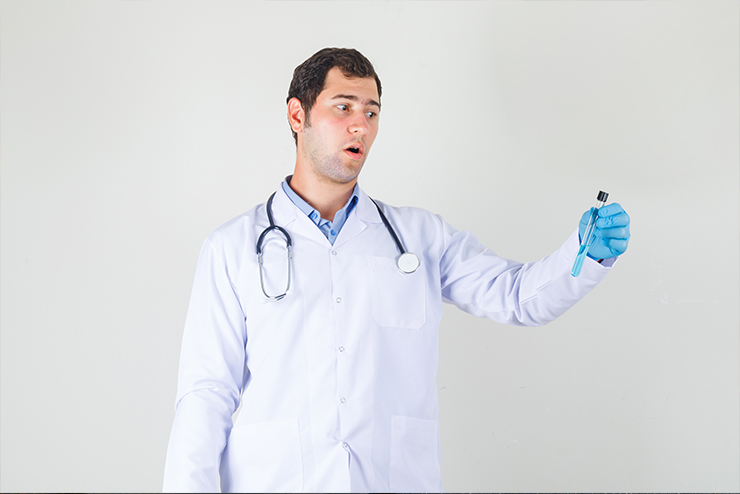
This article was published on: 11/11/22 4:42 AM
What is a SLAP tear?
A slap tear is considered to be a type of shoulder injury. Slap stands for “superior labrum anterior and posterior.” The tear occurs in the top portion of the labrum, where the biceps tendon is attached. Specifically, the tear takes place in the front and back of the attachment. The biceps tendon could be injured as well. If the injury is not too severe, it might heal with nonsurgical treatments like ice and physical therapy. In case the treatment fails to work, or if the tear is serious, you may need surgery.
What are the different types of SLAP Tears?
If someone has been diagnosed with a SLAP tear. The surgeon may have called it type 1, type 2, or 3, etc. SLAP tears have been classified according to the severity of the tear.
SLAP Type 1
This is a partial tear and degeneration to the superior labrum, where we can find that the edges are rough and frayed along the free margin, but the labrum is not completely detached. Usually, the surgeon cleans (debride) the edges.
SLAP Type 2
According to the surgeon they usually find this type 2 type of SLAP tear. The superior labrum is completely torn off the glenoid, due to an injury. This shows when it leaves a gap between the articular cartilage and the liberal attachment to the bone. Type 2 SLAP tears can be further subdivided into (a) Anterior (b) Posterior (c) Combined anterior-posterior lesions.
SLAP Type 3
A type 3 tear surgeon says ‘bucket-handle’ tear of the labrum, where the torn labrum hangs into the joint and causes symptoms of ‘locking’ and ‘popping’ and ‘clunking’.
What are the causes of a SLAP tear?
In slap tears, you will experience pain at the top of your shoulder at the location of the slap. Some of the causes of Slap Tear include:
Chronic injury is one of the common causes of SLAP tears. It is generally seen in people involved in sports like playing baseball or athletes who throw balls, swim, and lift heavy weights.
Ageing is another cause of Slap tears. It is commonly seen in people between the age group of 40 and above. It happens when your labrum wears out over time.
Acute Injury can even lead to SLAP tears such as if someone is falling and tries to block the fall with your outstretched arm or people use abrupt jerking movements to lift heavy objects, motor vehicles collision.
What are the symptoms of SLAP tears?
Common symptoms we can find are deep pain within our shoulder joints, chaperoned by catching or popping sensation. After the injury, you will find out that shoulder weakness and pain with movement or lifting. Some of the other symptoms include:
What happens if SLAP tears are not treated?
If a SALP tear is left untreated some of the common problems could occur, like shoulder dislocation, reduced range of motion, chronic pain, and frozen shoulders (adhesive capsulitis). After a time scar tissue starts building immediately in the area of the tear and it also shows effects on the ligaments, labrum, and some tissue inside the joints and your rotator cuff. Scar tissue is not that flexible and it will limit the range of motion of your shoulders, and it can make your movement impossible altogether.
How can you prevent SLAP tears?
It is even seen that people have SLAP tears without any symptoms or pain. The main issue is not that they can tolerate these tears. While there are various types of slap tears, most of them can be treated with physical therapy or surgery. The best treatment method depends on your age, overall health, and specific injury. The best option for the treatment of SLAP tears is prevention. Sometimes associated with poor mechanics, overhead athletes it is compulsory to maintain stretching to maintain the rotation of the shoulder. They should focus on the rotator cuff and shoulder blade stabilizing muscle strengthening program. It doesn’t need any specific area or place ( home, garden, etc. ). But perhaps it is the better option done under an authorized person so that you know better to prevent shoulder injury.
How are SLAP tears treated?
A doctor will use different types of methods to diagnose your injury. Some of these methods include checking the medical history of the patient as to what type of injury might have caused the injury, a doctor will examine your shoulder and its range of motion, and they may also check your neck and head for any other problems, you might also be asked to get an MRI or CT scan which allows the doctor to examine the tissues in your shoulder, they may also request for the patient to get an X-ray in case they think that the bones are injured.
How long does it take to recover from SLAP tears?
The recovery time may differ for everyone, it usually takes around 4 to 6 months. Most people are then able to return to normal physical activity. If you have a slap tear, you may have a wide range of symptoms. Most of these are quite similar to other types of shoulder injuries. Some of the symptoms of slap tear are shoulder weakness, pain when lifting things, especially over the head, pain with certain movements or positions, shoulder popping, locking, or grinding, and reduced range of motion. You are more likely to need surgery if your tear is severe. During the recovery, make sure to continue physical therapy and follow your doctor’s advice. It will help a great deal for your shoulder to heal and regain its normal range of function.